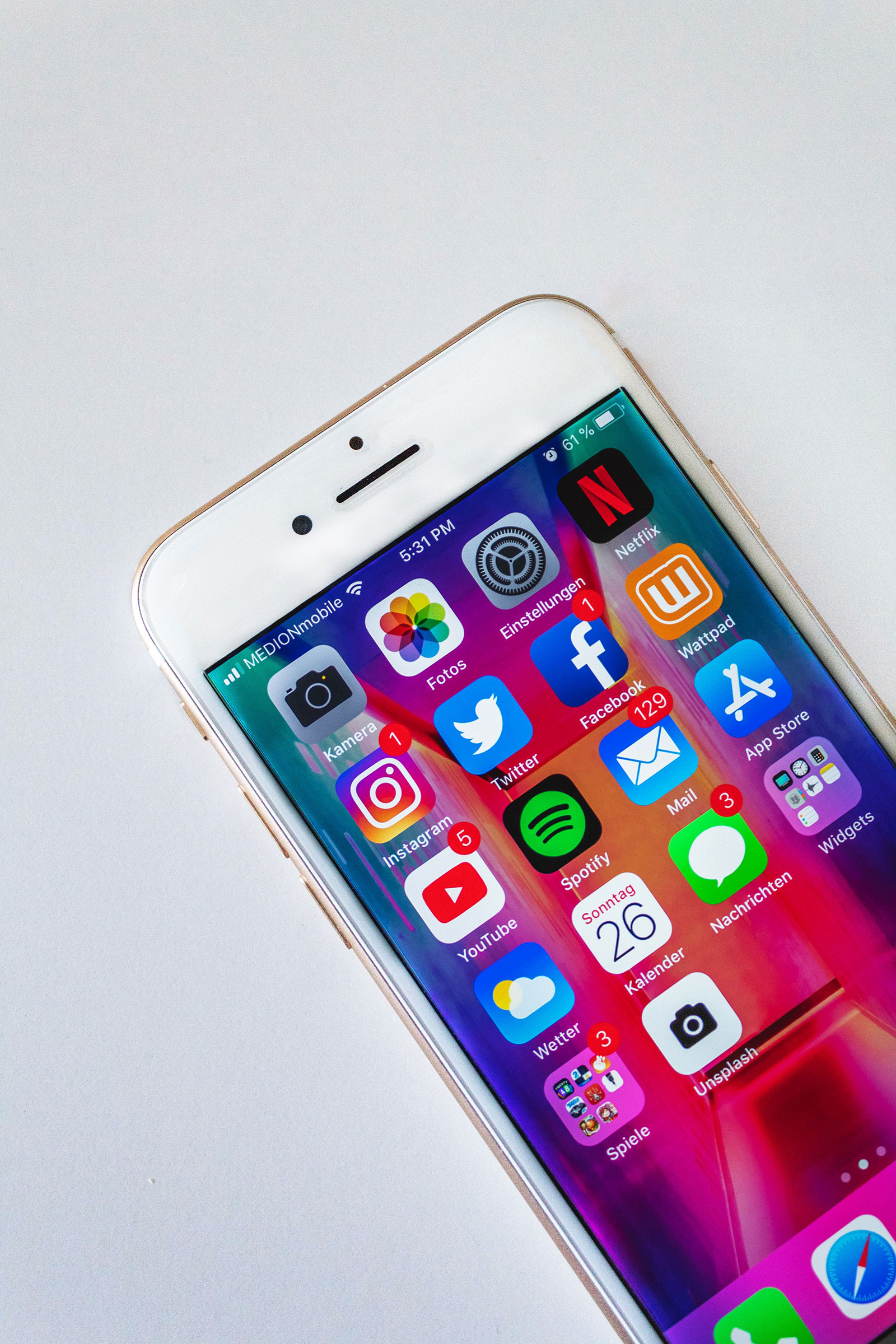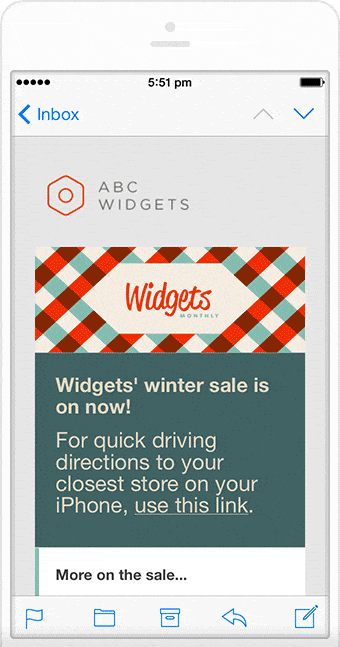Article first published November 2013, updated March 2019
We’re increasingly seeing brands funnel their customers directly to mobile apps in order to provide an optimized experience on their platform of choice, so will we eventually see native mobile apps trump web landing pages as the preferred post-tap experience?
Across our resources, we’ve canvassed a variety of techniques for improving the usability of email campaigns, both when viewed in the inbox and after. Some of our most popular guides have covered topics such as initiating calls from messages and how to design responsive email. This popularity comes without surprise. Recently, an email manager for a popular travel brand mentioned that 50% of their marketing emails were being opened on mobile devices. This is consistent with Litmus’ 48% figure in October, as well as many other findings along these lines.
We’re already aware of techniques for displaying content on mobile devices only (not to mention dynamic content). But perhaps we should not only be looking into optimizing the email-to-web experience, but taking advantage of the subscriber’s mobile device in more engaging ways.
What percentage of emails are opened on mobile?
Is the mobile email marketing hype just a passing trend or is it really here to stay?
To give you a clear answer, let’s look at some stats on mobile email marketing. In particular, we will look at the percentage of emails that are opened on mobile devices.
- Approximately 53% of emails are opened and digested on mobile devices.
- 75% of Gmail’s 900M users access their email via mobile devices.
- One out of every three clicks in an email occurs on a mobile device.
If we are to go by the data above, mobile email marketing is definitely here to stay. It might even outperform its desktop counterpart.
Using email as the funnel into apps
What currently connects the web and email with mobile apps are URL schemes (or “hooks”), which are URLs that can launch native apps on a mobile device and execute an action within the app. These URL schemes can either use a https:// schema name, or a schema name that’s unique to the app. For example, here’s the URL scheme for launching driving directions in iOS Maps:
<a href="https://maps.apple.com/?daddr=Cupertino,+CA&saddr=Current+Location">Driving directions to Cupertino</a>
Alternately, here’s the scheme for opening a location in the Foursquare app on iOS devices:
<a href="foursquare://venues/523bae8011d2c59b54eb85cc>Check in to our office</a>
There are thousands of unique app URL schemes, many of which you’ll find documented within app developer pages or in directories like handleOpenURL. Even with all of this information, we have yet to see more of these URLs being used in marketing scenarios, like:
- Following a visit to a restaurant, a feedback email is sent, encouraging diners to write a Yelp review of the venue (Yelp’s docs)
- A competition egging on recipients to upload photos to Instagram, tagged with a brand’s account (Instagram’s docs)
- The distribution of a product demo video via YouTube (YouTube’s docs)
- Leading up to a sale, driving directions to a customers’ closest store (pictured, Apple Maps’ docs)
All these tasks can be reasonably performed on a mobile device. The advantage of skipping straight to a native app from the inbox is an experience that’s optimized for the user’s device and devoid of the visual clutter that can come with a mobile browser. It also encourages further interaction with the app, which is especially great if it’s your app.
Some examples of brands that are already launching apps from email include:
- Eventbrite, who display an “add to Passbook” link when an event confirmation email is viewed on a mobile device
For app developers, there are fairly straightforward upsides to directing email subscribers to an app. First of all, you can encourage usage and measure resulting activations, re-engagement, and events (like a profile being set up). You can also link directly to new functionality that you’ve introduced to subscribers via a campaign. Email doesn’t just have to be used to send notifications—it can also be used to drive people to an app.
But isn’t this a device-specific solution?
There are a couple of issues with using the app-specific schemes from email. For starters, the URL to a specific app and action may not be static, whereas, once sent, a link in an email campaign is forever. Secondly, URL schemes for multi-platform apps may vary by platform (i.e. what works on an iPhone may not work on Android), so the chance of failure can be high.
Fokke Zandbergen proposed a solution, which is to link through to a website. The benefit is that:
“A website is dynamic. You can use information on the user’s device and browser to provide information and actions that closely match the user’s environment.”—URL schemes for iOS and Android (2/2), Fokke Zandbergen
The website is a blip, serving to rapidly redirect the user to the app on their platform. In many cases, a prompt doesn’t need to be displayed (as in the Maps example above). For an insightful overview on how to use URL schemes, I highly recommend Fokke’s series on URL schemes for IOS and Android—here’s Part 1 and Part 2.
While we are still far from replacing the landing page, it’s likely that we’ll see an increasing number of mobile app developers, e-commerce brands, social platforms, and more forgoing the browser for a more seamless email-to-app experience.
Enter deep linking for mobile email marketing
To overcome the platform-specific challenges that come with sending out the same URL to subscribers, developers came up with a solution called deep linking.
Deep Linking, in its simplest form, is a system by which a link in your email directs you to your mobile app, as opposed to a webpage.
How does it work?
Without going into technical details, deep links mirror webpages. In essence, most (in some cases all) webpages have an app version that is displayed in a native app. This process eliminates the need to pass through a website in order to promote a more seamless mobile experience for visitors.
For the marketer, this is a great development, as eliminating one step (passing through the website) increases conversions.
Examples of apps being used in email
Are there brands that are using the combination of email and app successfully?
Definitely.
Let’s take a look at 3 examples.
The Nike App
Running a successful store in a mobile era demands that you adapt to the ever-advancing landscape. And Nike did just that by launching an app to boost their marketing efforts.
Source: Really Good Emails
Nike promises a personalized experience, early bird discounts, VIP treatment, and a whole lot more for those who download the Nike App. However, the power of their beautifully designed app lies in the fact that it works in tandem with email to offer promotions, information, and, above all, a pleasant experience for the customer.
Once you have downloaded the app, transitioning from email to app is a seamless experience, as clicking on a link in the email will take you directly to the offer page.
Netflix
Netflix’s URL takes you directly to your Netflix account once you click on it. In fact, if the email is asking you if you want to continue watching a program you left halfway, it will take you straight back to the action.
This is a great way of re-engaging subscribers who are engaged and it works wonders. You can take a cue from Netflix and re-engage customers by taking them back where they left off on their customer journey.
Most people like to keep up with what is happening in their friends’ lives, as is seen by the massive number of Facebook users.
Facebook has also done a great job using this technique to take subscribers straight to their Facebook page. The design of their emails is reminiscent of the app, making the transition through the very familiar blue CTA button smooth.
This same kind of transition from email to app can be achieved by using an email template that mirrors your app.
Wrap up
With email engagement higher on mobile than on desktop, it makes sense for brands to create apps and direct their customers to these native apps. As a marketer, this is an avenue you need to explore, as it opens up a whole new world of opportunities to use email more effectively.
While achieving this seamless transition was problematic until recent years, the advent of universal links, Dynamic Links, and deep linking has made it possible for you to give your subscribers an exceptional experience with your brand from email to native app.
Here are the key takeaways:
- Mobile email marketing is here to stay, so it’s worth investing in.
- Apps are a great way of enhancing your mobile email marketing.
- When using an app in conjunction with email, make sure they mirror each other, so as to give your subscriber a seamless experience.
If you need more insight on how you can give your subscribers the best experience possible on their mobile devices, check out our in-depth guide on email marketing in the mobile era. Armed with these email marketing mobile best practices, your marketing is bound to yield excellent results.







